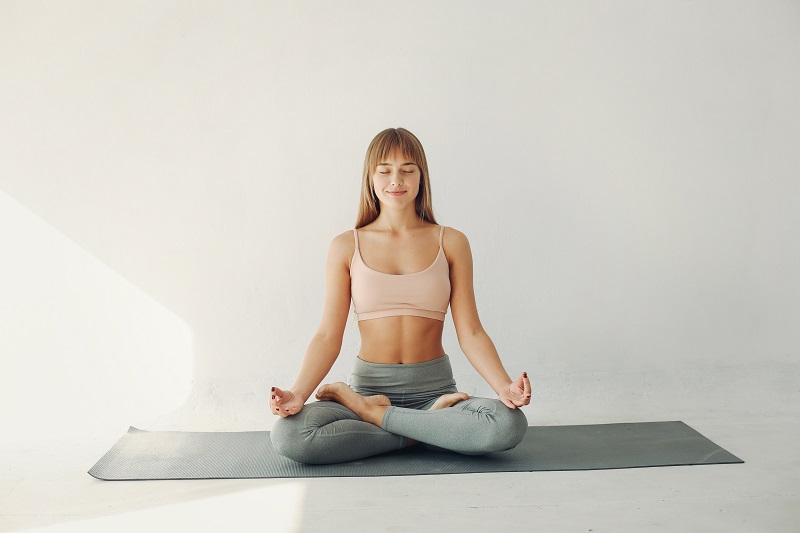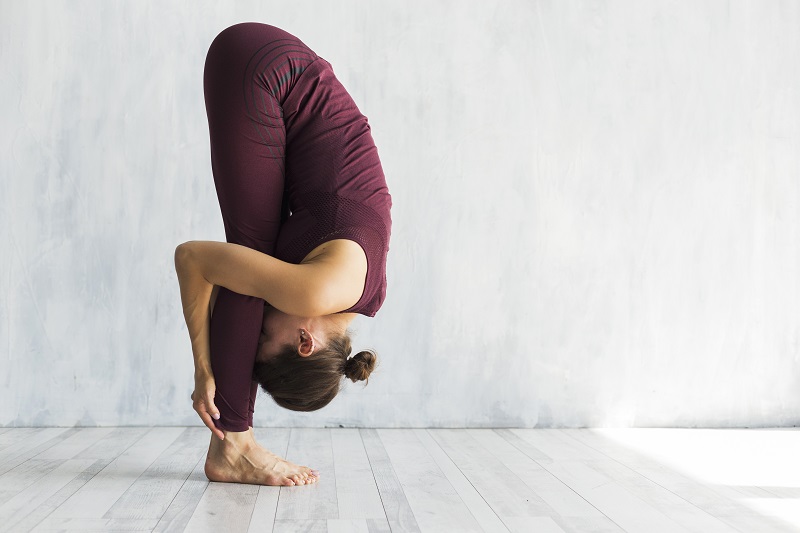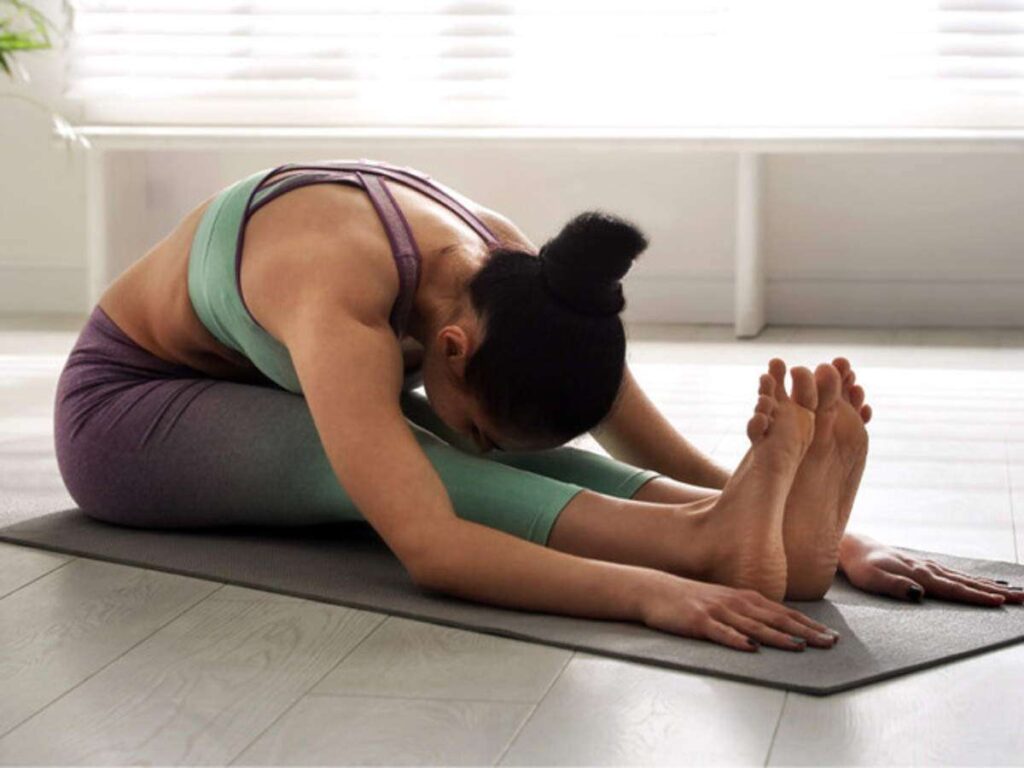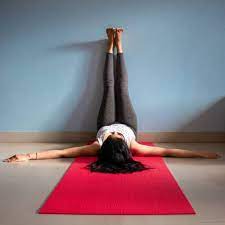
In the hustle and bustle of modern life, relationships can often be tested. I am talking about my close friend Neha and Akshay.
Akshay and Neha had been married for over a decade, but as the years passed, they found themselves drifting apart. Work, responsibilities, raising family had gradually created a wedge between them. The stress of daily life had taken its toll and their relationship had lost the spark it once had.
One day both Akshay and Neha (my close friend) turned to me, seeking a way to relieve the stress they were feeling and rekindle their connection.
Understanding the positive effects of yoga to reduce stress, I suggested that they explore yoga together. Intrigued by my idea and eager to reconnect, they embarked on this journey as a couple.
As the weeks went by, they started to notice something beautiful happening. Their yoga practice was not just about physical movement, it was about breathing, connecting and finding serenity with themselves.
Neha and Akshay began to experience a sense of inner peace and balance they hadn’t felt in years. The stress of their daily lives no longer seemed insurmountable and they found themselves communicating more openly and supportively.
Yoga brought Neha and Akshay back to each other, it’s not just a tool for stress reducing, but a path to rediscovering love and connection.
To enjoy all the good things yoga offers, it is important to know what yoga really is.
What is yoga in simple words
Yoga is an ancient practice that includes exercises, breathing methods, meditation and principle for improving your well-being and creating balance in your body and mind.
The term ‘yoga’ comes from Sanskrit word ‘yuj’ meaning to unite, its aim to bring harmony to your body, mind and spirit.
Yoga includes various components
- Asana: Yoga involves various physical postures, known as asana. Yoga comes in various styles, and each has its unique postures and methods.
- Pranayama: Pranayama is the practice of managing and regulating one’s breath. It involves various breathing exercises and techniques that can help calm the mind, increase energy and enhance overall well-being.
- Meditation: Meditation is a fundamental aspect of yoga that focuses on calming the mind, enhancing self-awareness and promoting inner peace.
- Philosophy: Yoga is based on a rich philosophical tradition that includes principle and ethical guidelines for living a balance and meaningful life. The yoga sutras of Patanjali, one of the foundational text of yoga, outlines the eight limbs of yoga, which encompass various aspects of personal social conduct, meditation and self-realization.
- Mind-Body Connection: Yoga emphasis the connection between the body and mind. It encourages practitioners to be present in the movement, fostering a sense of inner-awareness and mindfulness.
- Stress Reduction: Many people turn to yoga as a means of reducing stress and promoting relaxation. The combination of physical postures, breath control and mindfulness can help alleviate stress and anxiety.
- Physical and mental health: Yoga can improve physical health by increasing flexibility strength and balance. It can also help with mental health by reducing symptoms of depression and anxiety.
- Spiritual Growth: For more practitioners, yoga has a spiritual dimension, connecting them to a deeper sense of self and the universe.
Yoga is versatile practice that can be adapted to suit the needs and goals of individuals, whether they are seeking improved physical fitness, stress relief, spiritual growth or a combination of these benefits.
Why does yoga reduce stress
Yoga offers a multifaceted approach to stress reduction, influencing both the body and mind through various scientific mechanism.
Many individual find solace in yoga as stress management tool, but the question still lingers. Does yoga reduce stress
Science and experience suggest that it does, offering physical and psychological relief.
Here are the key ways in which yoga effectively reduce stress.
- Neuroendocrine regulation: Yoga practices such as asanas (Physical postures) and pranayama (breath control) can influence the hypothalamic-pituitary-adrenal (HPA) axis, which regulates stress hormones like cortisol.
- Controlled breathing activates the parasympathetic nervous system, reducing cortisol levels and promoting relaxation.
- GABA production: Some studies suggest that yoga may increase the production of gamma- aminobutyric acid (GABA), a neurotransmitter associated with relaxation and reduced anxiety.
- Vagus nerve activation: Yoga practices that emphasize deep diaphragmatic breathing stimulate the vagus nerve, which plays a key role in the body relaxation response.
- Activation of the vagus nerve can reduce heart rate and blood pressure, promoting a state of calm.
- Reduction of inflammatory response: Chronic stress is associated with increased inflammation in the body, which can contribute to various health issues.
- Yoga has been shown to reduce markers of inflammation, which might make the effects of stress less harmful.
How yoga helps to reduce stress

PS: freepik.com
Yoga reduces stress through physical means by promoting relaxation of tense muscles and control breathing.
It also addresses stress psychologically by fostering mindfulness and calm mental state, reducing worry and anxiety.
Here is how yoga is effective in reducing stress.
- Physical relaxation: The practice of yoga involves physical postures (asanas) that targets different muscles groups. The stretching and relaxation of muscles help release physical tension and reduce the physical symptoms such as muscle tightness and discomfort.
- Breath control: Deep and deliberate breathing techniques can trigger the body’s relaxation response, reducing the production of stress hormones like cortisol and activating the parasympathetic nervous system, which promotes relaxation.
- Mindfulness and mental calmness: Through practice like meditation and mindfulness, individual learn to stay focussed on the present moment, reducing worry, anxiety and rumination about past or future stressors.
- Stress hormone regulation: Many wonders, how does yoga reduce stress. The answer lies in the profound effect it has on stress hormone regulation, which can lead to a more balanced and resilient response to stressor.
- Improved sleep: Stress often disrupts sleep patterns. Yoga can improve quality of your sleep by calming the mind and body.
- Enhanced self-awareness: Yoga encourages self-awareness. The self-awareness can empower individuals to make positive changes in their lives.
- Positive lifestyle choices: Engaging in regular yoga practice often leads to healthier lifestyle choices. People who practice yoga tend to adopt better dietary habits, exercise more and the use of substance like alcohol and tobacco.
What type of yoga is best for stress relief
Several types of yoga can be effective for stress relief, take a look on it
- Hatha yoga (focusing on physical postures and breath control (good for beginners))
- Restorative yoga (focusing on poses with help of props)
- Yin Yoga (focusing on poses for an extended period)
- Vinyasa or flow yoga (continuous movement with focusing on breath)
- Iyengar yoga (proper alignment with use of props)
- Kundalina yoga (combines postures, breathing exercises & meditation)
Ultimately the best type of yoga for stress relief is one that resonates with you and fits your individual needs and preferences. It’s a good idea to explore different styles to see which one you feel most comfortable and relaxed with.
We will delve into Hatha yoga, which is particularly suitable for beginners due to its simplicity.
Hatha yoga for stress relief
Hatha yoga is a traditional and widely practiced form of yoga known for its effectiveness in stress relief.
It’s often described as a ‘gentle’ and ‘accessible’ form of yoga because it is suitable for people of all fitness levels, including beginners.
Yoga asanas to reduce stress often include gentle poses with breath control.
3 Yoga asanas to reduce stress
Yoga asanas help to calm the mind, release tension and promote relaxation. Here are some yoga asanas that are particularly beneficial for stress reduction.
Forward bend (uttanasana) yoga to reduce stress

One of the most prominent advantages of uttanasana is its ability to reduce tension in the muscles. This pose targets the hamstring, lower back and spine which are commonly area where stress manifests physically.
However, uttanasana’s benefits extended beyond the physical realm and delve into mental domains. The act of folding forward and allowing your head to hang naturally creates a gentle inversion, improved blood flow to the brain, resulting in reduce mental stress and anxiety.
Seated forward bend (paschimottanasana)

One of the primary advantages of this pose is its capacity to stretch both the spine and the hamstrings. Paschimottanasana’s gentle stretching action helps alleviate physical tension, promoting physical relaxation and a sense of relief, which has positive influence on overall stress levels.
Paschimottanasana play a vital role in promoting mental calmness. The act of folding forward in this pose encourages a sense of introspection and inward focus. This turning inward is similar to a meditative state and it can greatly lessen mental stress and anxiety.
Paschimottanasana is indeed a beneficial yoga asanas to reduce stress and anxiety.
Legs up the wall (Viparita karani)

The benefits of this pose is its promotion of relaxation. Alternatively, raising your legs can have an immediate calming effect on the body and mind.
It encourages improved blood circulation and helps to reduce swelling in the legs, which result from long period of standing or sitting.
Viparita karani also has a profound impact on relieving tired and fatigue legs, encourages flow of blood away from the feet and legs. Viparita karani is indeed a simple yoga to reduce stress.
Which yoga best for stress relief
The physical ease provided by legs up the wall (Viparita karani) allows individual to focus on their breath, which significantly reduce mental stress and anxiety.
How can I reduce stress with yoga at home
Creating a soothing environment and practicing stress-relief poses regularly, you can effectively manage and reduce stress from the comfort of your home.
Which yoga is best for overthinking
Seated meditation is a powerful practice for calming the mind. Sit comfortably, focus on your breath and let go of racing thoughts. Meditation can help you become more aware of your thought patterns and reduce overthinking.